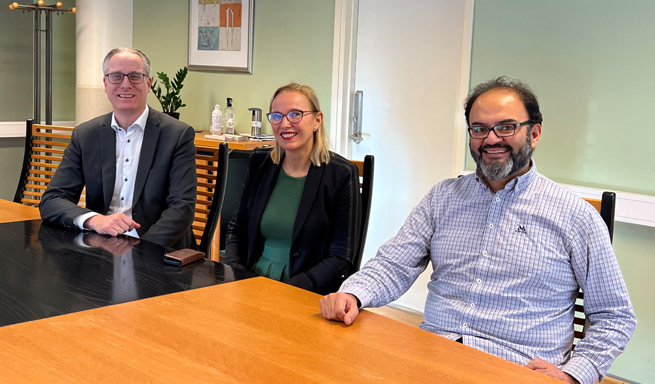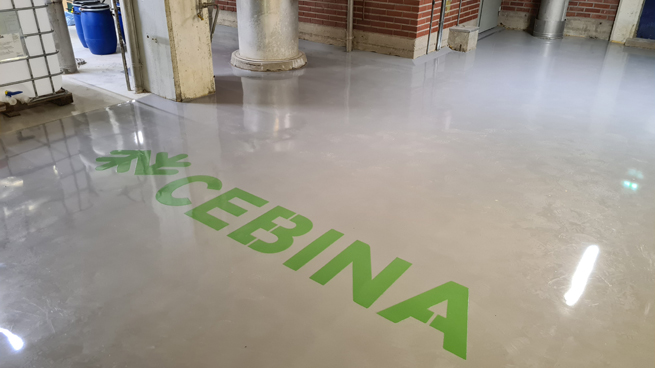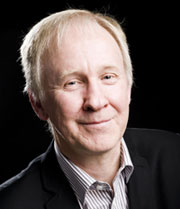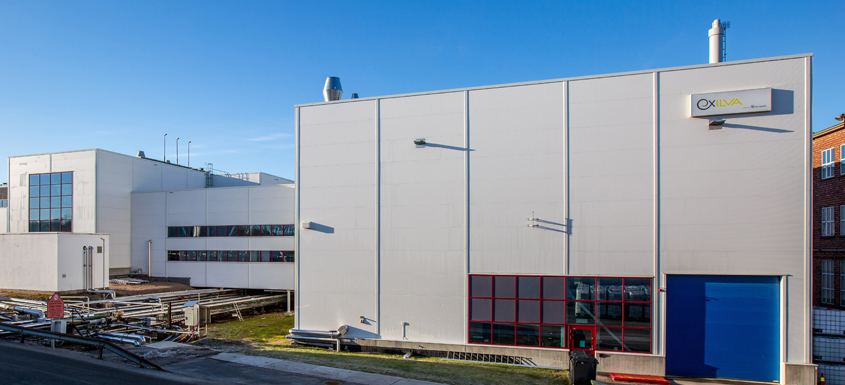Research and development of different types of nanocellulose is since many years an area in which a lot of money and efforts are invested. Norway, although not among the biggest pulp and paper producers in the world, is no exception as shown in this blog contribution.
Nanocellulose is not a single and homogenic substance for one application only, but as Kristin Syverud, Research Manager at RISE PFI in Norway, expresses it: ”There are many different types of nanocellulose, each with different surface chemistry, surface charge or other properties, and which therefore behave very differently. Nanocellulose can be obtained from wood, annual plants, residual streams, marine raw materials as well as marine organisms or synthesized by microorganisms and then the nanocelluloses will also be different. In addition, the properties are affected by the different manufacturing methods. The nanocellulose products become as different as when different pulps are used in different paper products. Nanocelluloses actually have an even wider spectrum than different pulps have.”
So it goes without saying that a single blog contribution cannot give the full picture of what is going on in the nanocellulose field. Even writing a book with the aim of covering everything that goes on within research and implementation of nanocellulose is a difficult task as parts would be outdated before it is printed. Therefore, my humble ambition with this and a couple of later blog contributions is to give just a few examples of what is going on within nanocellulose in the Nordic countries.
The research institute RISE PFI in Norway has since 2003 run research and development projects within the nanocellulose field, mostly focused on cellulose nanofibrils exploring applications in paper and board as well as in food, medicine and 3D printing.
 Philip André Reme, Kristin Syverud and Gary Chinga Carrasco at RISE PFI are deeply involved in Norwegian nanocellulose research. Photo: RISE PFI.
Philip André Reme, Kristin Syverud and Gary Chinga Carrasco at RISE PFI are deeply involved in Norwegian nanocellulose research. Photo: RISE PFI.
“Our task is to be an innovation partner for the industry so that companies can grow,” emphasizes Philip André Reme, Managing Director RISE PFI. “We have published many articles with results from our nanocellulose research, which also enables others to build on our work and to commercialize products. Since gel of nanocellulose can be easily extruded, it can be used for 3D printing, which we have done much research on. In fact, there are already 3D inks based on nanocellulose and on the research we have done at RISE PFI,” adds Gary Chinga Carrasco.
In Norway, there is an initiative to build up national research infrastructure in strategic areas. RISE PFI is responsible for the Norwegian Biorefinery Laboratory, NorBioLab, with equipment available to industry and researchers. Funding has recently been received for a new Norwegian research infrastructure, NORCELlab, Norwegian Cellulose Laboratory, which will be available to industry, institutes and academia. This infrastructure will contribute to basic research, innovation and education and be ready in 2024.
“We were early in identifying biomedical applications for nanocellulose,” says Gary Chinga Carrasco, RISE PFI and who was rewarded the 2021 TAPPI Nanotechnology Division Mid-Career Award, for his and RISE PFI’s work within nanocellulose. “If you produce nanocellulose in a certain way, you get a gel with a wound healing potential with very fine antibacterial properties. A method was implemented to ensure that we could produce an ultra-pure nanocellulose from wood without contamination. In a follow-up project in cooperation with the Norwegian biotech company Oxy Solutions, this research is now close to clinical tests and, if everything goes according to plan, commercialization of the product can take place in two to three years. In addition to nanocellulose from wood, nanocellulose can also be obtained from marine organisms (tunicates), a process developed by the Norwegian company Ocean Tunicell which produces an ultrapure medical grade nanocellulose for biomedical purposes.”
“RISE PFI also works with "tissue engineering" where the point is to help the body heal itself,” Kristin Syverud adds. “To do this, it needs stem cells from the patient himself plus a carrier that the cells can settle on. Nanocellulose has a surface that is especially well suited to the cells wanting to attach to it and to reproduce.”
Both Borregaard and Norske Skog, the two biggest companies in the Norwegian cellulose-based industry, started R&D work in 2005 to develop methods for production of MFC, micro fibrillated cellulose. The result is that they few years ago commercialised their patented methods and have introduced MFC products on the market.
“It all started in 2005 when we decided to initiate radical innovation for increased value creation in the area of cellulose / special cellulose,” says Hans Henrik Øvrebø, Chief Technology Officer at Borregaard Cellulose Fibrils. “The innovation project was top-down, initiated and followed up by top management. In short, the project started with desk work, followed by experiments in the lab and large-scale sample production. The result was a decision to construct a plant directly adjacent to our biorefinery and head office in Sarpsborg. The technology has of course been patented.”
As raw material, Borregaard uses their own special cellulose based on the sulphite method. The process is flexible and can also use other cellulose qualities. The plant, which is the world’s first of its kind, was taken into operation during the fourth quarter of 2016 and has a capacity of 1,000 tonnes of dry product. The product, named Exilva, is sold as a 2% or 10% water dispersion. When needed, the capacity can easily be doubled.
“We have a strong focus on applications and customer groups that have technical challenges in their products where Exilva with its new properties can help to solve the problem,” Hans Henrik Øvrebø continues. “Examples are blend recipes with high ionic strength, extreme pH and high dry matter content. There is a strong focus on sustainability today and most of the customers work with new technologies to phase out fossil-based chemicals and solutions such as barrier coatings in food packaging instead of plastic.”
In 2005 Norske Skog also started their research and development within MFC and in 2017 their MFC plant at the Saugbrugs SC paper mill was taken into operation. The raw material is sulphate pulp and the process is a modified Turbak method in which mechanical shear forces and pressure drops fibrillate the cellulose. Depending on the grades produced, production capacity can reach 500 tonnes per year.
 An advantage is that an epoxy with MFC does not need to be plastered afterwards. Photo: Norske Skog Saugbrugs.
An advantage is that an epoxy with MFC does not need to be plastered afterwards. Photo: Norske Skog Saugbrugs.
“Through the enormous surface, MFC has a great ability to absorb water,” Hugo Harstad, Commercial Development Director at Norske Skog Saugbrugs says. “One gram of MFC has a total surface area that covers a tennis court. It is the surface that gives the effects we see both in paint, for building materials and in paper or board. As little as 0.1% or 0.2% MFC in paint control the thixotropy. With our product, the paint becomes like a ketchup and it stays on the wall, unlike with a regular thickener.”
“The government grants from Innovation Norway and the Norway Research Council enables development of groundbreaking new materials needed for the transition to a more sustainable industry. It is also crucial to have a close cooperation with application partners who are specialists in their industry.”
“Where we have come the furthest is in water-based paints and epoxy systems. We have succeeded in bringing out the practical benefits of the product that a customer experiences. For example, we have cracked the code to be able to spray epoxy on a wall, which provides great time savings. By adding our MFC product Cebina to an epoxy product, it is possible to spray epoxy with high-pressure and make it stay on the wall. Time is important when you mix two epoxy components because then you only have half an hour before it has hardened. An advantage is that an epoxy with MFC does not need to be plastered afterwards.”
In spite of Norway having a rather small pulp and paper industry, Borregaard and Norske Skog Saugbrugs were in an international perspective quicker than most to commercialise MFC research and development results. A common experience is that it takes time to get customers to realise all the benefits MFC products can give when replacing other additives, not seldom fossil-based ones. So, it seems to be a product that needs qualified technical selling to get through, which is not unusual when it comes to situations where a new product tends to change accepted truths from the past. There are, however, no doubt that different kinds of nanocelluloses will play ever more important roles providing new sustainable features and benefits. Norwegian research and industry have entered this bandwagon.
 Sören Back has been working in the Swedish pulp and paper industry since 1976. With an M.Sc. in chemistry with focus on in pulp and paper technology the career spans from production control, product development, sales and marketing to communications, including PR, primarily in managerial positions. Over the years Sören has worked for MoDo Paper, M-real, now Metsä Board, and SP Processum but is now running his own business, SB Kommunikation AB, as freelance writer and communications consultant with customers mainly within the pulp and paper industry.
Sören Back has been working in the Swedish pulp and paper industry since 1976. With an M.Sc. in chemistry with focus on in pulp and paper technology the career spans from production control, product development, sales and marketing to communications, including PR, primarily in managerial positions. Over the years Sören has worked for MoDo Paper, M-real, now Metsä Board, and SP Processum but is now running his own business, SB Kommunikation AB, as freelance writer and communications consultant with customers mainly within the pulp and paper industry.













